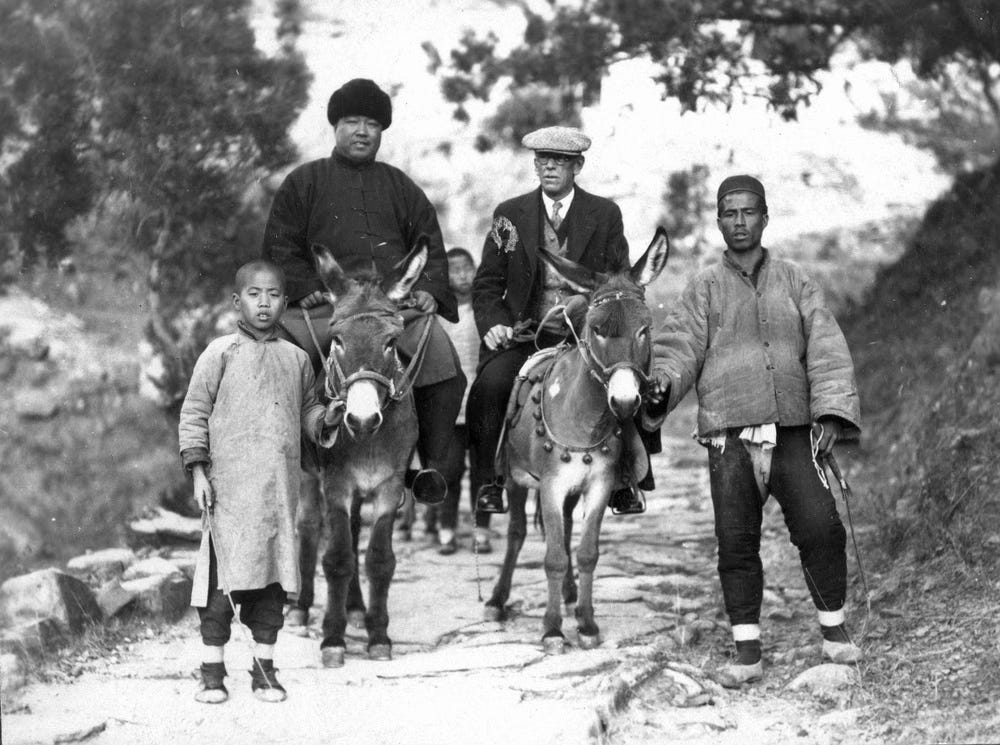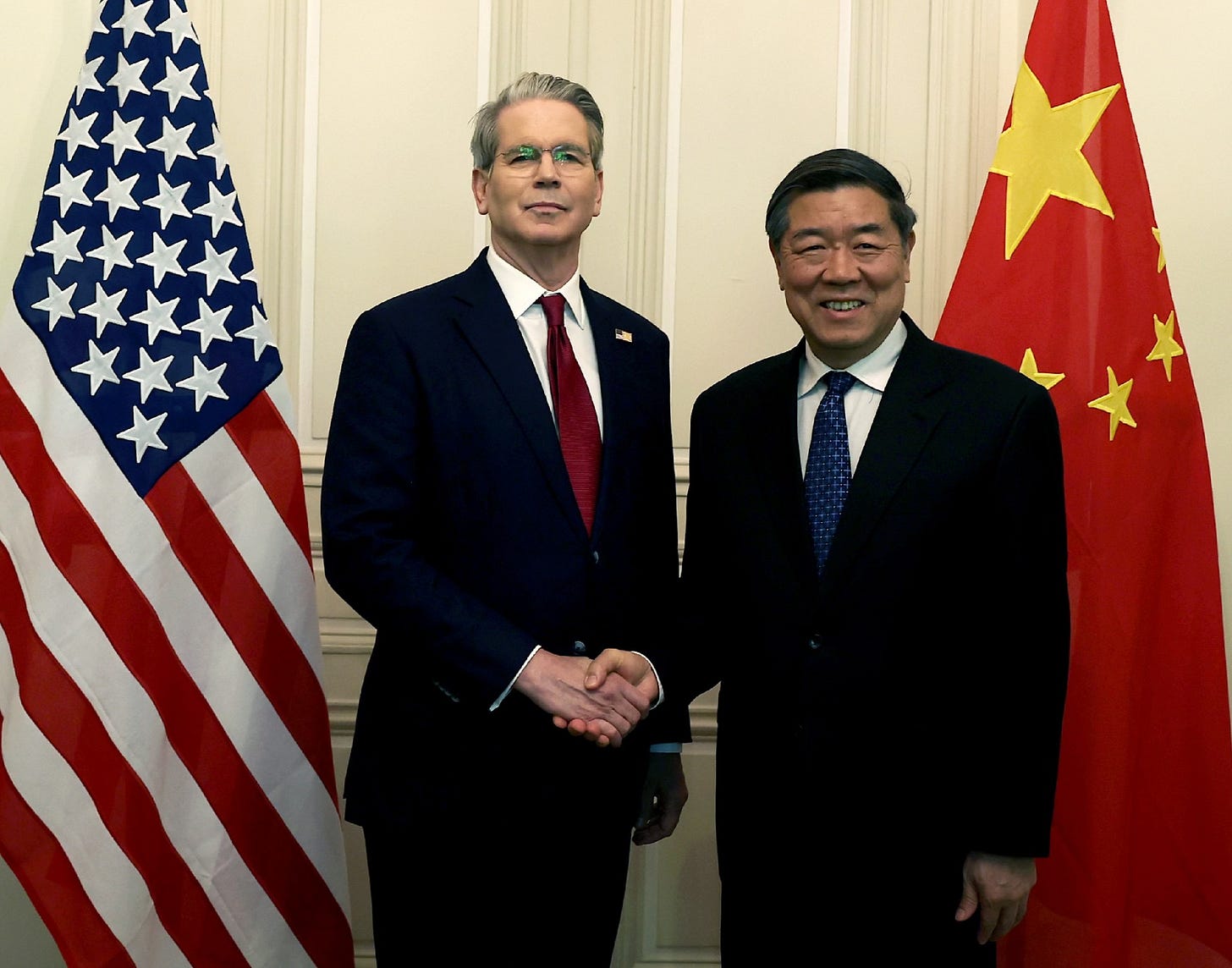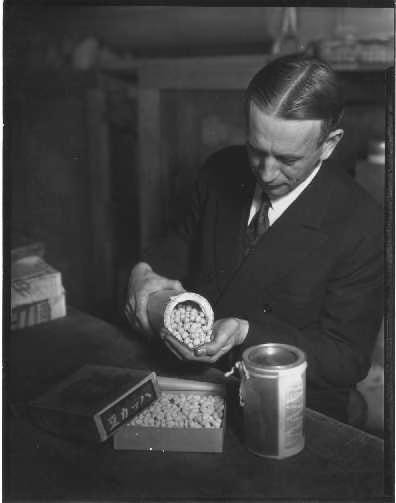Trouble in Trump country
A magic bean is giving his team indigestion
In June, 1907, a tall young man named William F. Morse reported for his first day of work at the U.S. Department of Agriculture. The 24-year-old, a former high school football player in his hometown of Lowville, N.Y., had just graduated from Cornell University. He was assigned to Charles Vancouver Piper, who headed the USDA’s office of forage crops.
Piper thought soybeans, which were barely grown in America, held immense potential for the nation’s farmers. So he put Morse to work growing soybean varieties on an experimental farm in Arlington, Virginia, which is now part of the site of the Pentagon.
Soybeans took over Morse’s life and shaped his long career. He and Piper would write an influential 300-page book, The Soybean, published in 1923. Morse would help found the American Soybean Association and serve as its president three times. He would co-lead a two year mission to Asia to scout out worthy soybean varieties and investigate the plant’s uses for food and industry..
Morse and his colleague Palemon H. Dorsett collected 4,578 soybean seeds, of approximately 2,000 varieties from Korea, Japan, Manchuria and China. They sent home more than 250 foods made from soybeans.
“Some stunk mightily upon arrival,” noted William Shurtleff and Akiko Aoyagi, whose 2004 manuscript offers a detailed account of the work of Morse and his colleagues.

Birth of a $50-billion industry
The journey was the highlight of Morse’s career and an important factor in making him the leading pioneer of what is now the $50-billion American soybean industry. On March 1, 1929, Morse, Dorsett and three other Americans sailed from San Francisco to Yokohama, Japan to begin the two-year expedition. They carried 2,400 pounds of equipment packed into 18 trunks, including motion picture cameras, typewriters and devices to preserve plant samples.
Morse brought home many recipes, including sukiyaki, made with tofu, sprouts and soy sauce. “He built a low Sukiyaki table with a hot plate on top and cushions around it on the floor in his home and at every opportunity would invite over guests to serve them his specialty,” wrote Shurtleff and Aoyagi. Morse’s wife would make Boston baked soybeans, and the family ate soy ice cream, soy bread, soy waffles and soy muffins.
Nearly a century after the expedition, soybeans are America’s largest export crop. Yet they are giving indigestion to America’s farmers and President Donald Trump’s administration, since China has stopped buying American soybeans in that country’s trade dispute with the U.S.
The disruption hits Trump’s rural base especially hard; 8 of the 10 top soybean-producing states voted Republican in last year’s election. Farmers who backed Trump are blaming the administration for not resolving the dispute.
The story of the plight of the American soybean industry, which got its start from cooperation with Asian farmers in the Morse expedition, shows how there is no easy retreat from a globalized world.
Trump’s Fortress America vision, erected on the foundation of punitive tariffs, has severe limits given how reliant U.S. farmers are on their customers around the world.
The administration is scrambling to come up with a multi-billion dollar aid plan for soybean farmers. It is also trying to explain away the embarrassing fact that it is bailing out the government of Argentina, which cut its tariffs to sell soybeans to China, partly replacing the exports U.S. farmers would ordinarily have made.

All of this is well-known to U.S. Treasury Secretary Scott Bessent, who “owns thousands of acres of North Dakota farmland, worth up to $25 million,” as the New York Times noted. The farms grow corn, in addition to soybeans. (Bessent is required to sell his farmland under a government ethics agreement, and has agreed to comply by Dec. 15.)
Fit for a king
Soybeans have been cultivated in China since the 1100s BC, but were little known in the U.S. until the 20th century.
An American seaman, Samuel Bowen, who had traveled to China, planted soybeans in Savannah, Georgia in 1765. The next year King George III sent him a gift of 200 guineas for the soy sauce he produced, and he was soon granted a patent for the sauce. In 1770, Benjamin Franklin, then living in London, sent soy seeds to a friend and wrote of a “cheese” made from them in China called “Tau-fu.”
George Washington Carver, a chemist who was born into slavery, extracted oil from soybeans and learned of their value as protein in 1904. He urged farmers to rotate their crops, using soy plants as one option to help enrich the soil.
In 1909, the U.S. produced only 16,385 bushels of soybeans on 1,629 acres. Now the annual crop is more than 4 billion barrels, grown on more than 80 million acres. Soybean production has more than doubled since 1990.
In The Soybean, Morse and Piper write that it can be produced more cheaply than any other kind of bean, that it is easy to harvest and rich in oil. “There can be little doubt that the soybean is destined to become one of the major American crops.” The outbreak of World War II helped to vindicate that prediction, since the war cut off many foreign sources of vegetable oil.
Trade war
Among the farmers caught in the trade war are Josh and Jordan Gackle of North Dakota. According to The New York Times, their 2,300-acre farm is facing projected losses of $400,000 this year. “Soybeans that would normally be harvested and exported to Asia are now set to pile up in large steel bins,” the Times wrote.
China stopped buying soybeans from the U.S. when Trump hit China with tariffs in February. Instead, China is importing them from Brazil and other countries. In more normal times, China accounts for 54% of all soybeans exported from the U.S. and uses the crop largely to feed animals; the trade was worth more than $12 billion last year. China’s share has historically been about five times more than America’s next biggest customer, the European Union.
The Times quoted Jordan Gackle predicting a wave of foreclosures on farms. “Standing before a field of soybeans a few weeks away from harvest, he added: ‘All of it is unnecessary. The U.S. was not forced into this by anybody.’”
As Reuters reported, Decatur, Illinois, “was formerly known as the soy capital of the world because of its processing industry, Mayor Julie Moore Wolfe said.”
“When asked where the new soy capital was, the mayor dropped her voice to a whisper. ‘It might be Brazil,’ she said.”
It might even be Argentina. There, Reuters noted, President Javier Milei’s government suspended export fees on soybeans last month. That enticed buyers from China, who ordinarily would have been importing U.S. soybeans. “The deals infuriated U.S. farmers shut out of China as Bessent said Washington was negotiating to support Milei, a Trump ally, financially with a $20 billion swap line for Argentina. ‘The frustration is overwhelming,’ said Caleb Ragland, 39, a Kentucky farmer and president of the American Soybean Association.”
‘Scott, I can call you…’
An especially embarrassing moment for the Trump team came last month when Treasury Secretary Bessent was attending the UN General Assembly.
As Yahoo Finance noted, a photo, by Angelina Katsanis for AP, captured him reading a private text on his phone, apparently sent by Agriculture Secretary Brooke Rollins:
“Finally—just a heads up, I’m getting more intel, but this is highly unfortunate,” the text said. “We bailed out Argentina yesterday and in return, the Argentine’s [sic] are removing their export tariffs on grains, reducing their price, and sold a bunch of soybeans to China, at a time when we would normally be selling to China. Soy prices are dropping further because of it. This gives China more leverage on us.”
A second message said, “On a plane but Scott I can call you when I land.”

‘Professor’ Morse
William Morse was a gentle soul and might not have thrived amid the high-stakes tension of the current trade war. He was known for his kindness and restraint. “If anything upset him, he didn’t let it out on his fellow workers,” his daughter said. A smoker, Morse developed an ulcer and found soy products a useful part of the bland diet he followed.
According to the industry historians Shurtleff and Aoyagi, people would call Morse “professor” or “Dr.” even though he didn’t have those credentials. A co-worker, Edward J. Dies, described Morse as “heedless of material gain or personal honor, shy, modest, agreeable, and easy going, but with the repressed intensity of a crusader.”
Morse died on July 30, 1959, at the age of 75, but is still remembered. Shurtleff and Aoyagi wrote, “The work of Bill Morse runs like a bright thread through the whole tapestry of soybean and soyfood development in the Western world.”
The question now is how America’s farms will fit into that tapestry.





Farmers voted disproportionately for Trump in the two elections following his first victory despite policies that undercut their market. He bailed them out in the first term, and now is doing it again though many say they dislike the chaos and uncertainty. As with many Trump constituencies now at a disadvantage because of White House initiatives, farmers are finding Trump policies counter to their best interests. So what, exactly, accounts for continued farmland support? In the battle of culture over pockebook, looks like culture wins -- again.